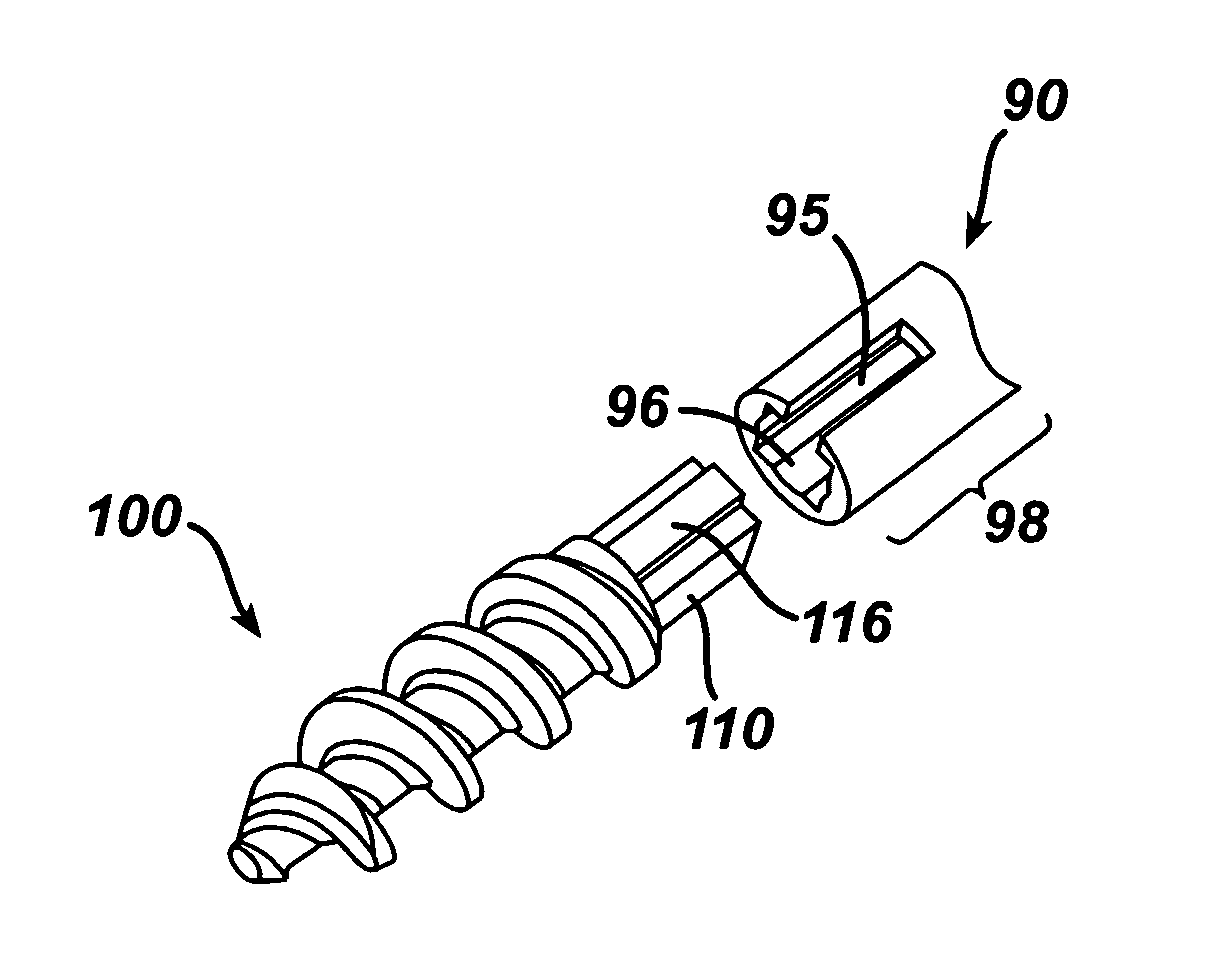Medical fixation devices with improved torsional drive head
a technology of torsional drive head and fixation device, which is applied in the direction of ligaments, osteosynthesis devices, prostheses, etc., can solve the problems of low stripping strength, inability to achieve torque transfer, and permanent damage to the drive head
- Summary
- Abstract
- Description
- Claims
- Application Information
AI Technical Summary
Problems solved by technology
Method used
Image
Examples
Embodiment Construction
[0022]The present invention provides a fixation device including an elongate shank defining a longitudinal axis and having at least one engaging member formed therewith to engage body tissue and facilitate placement of the device within the tissue and to secure the device in the tissue once implanted. The fixation device also includes a drive head for applying torsion to the elongate shank having a proximal end and a distal end and which is mated to the elongate shank so as to transfer the torsion to the elongate shank, thereby providing for placement of the device in tissue. The drive head may have a circular or a substantially non-circular radial cross-sectional geometry, for example oval, and includes at least one anti-rotational member (ARM) formed integrally therewith to provide for increased transfer of the torsion to the shank. In one embodiment the fixation device comprises a drive head of circular or substantially non-circular radial cross-sectional geometry with at least o...
PUM
 Login to View More
Login to View More Abstract
Description
Claims
Application Information
 Login to View More
Login to View More - R&D
- Intellectual Property
- Life Sciences
- Materials
- Tech Scout
- Unparalleled Data Quality
- Higher Quality Content
- 60% Fewer Hallucinations
Browse by: Latest US Patents, China's latest patents, Technical Efficacy Thesaurus, Application Domain, Technology Topic, Popular Technical Reports.
© 2025 PatSnap. All rights reserved.Legal|Privacy policy|Modern Slavery Act Transparency Statement|Sitemap|About US| Contact US: help@patsnap.com



